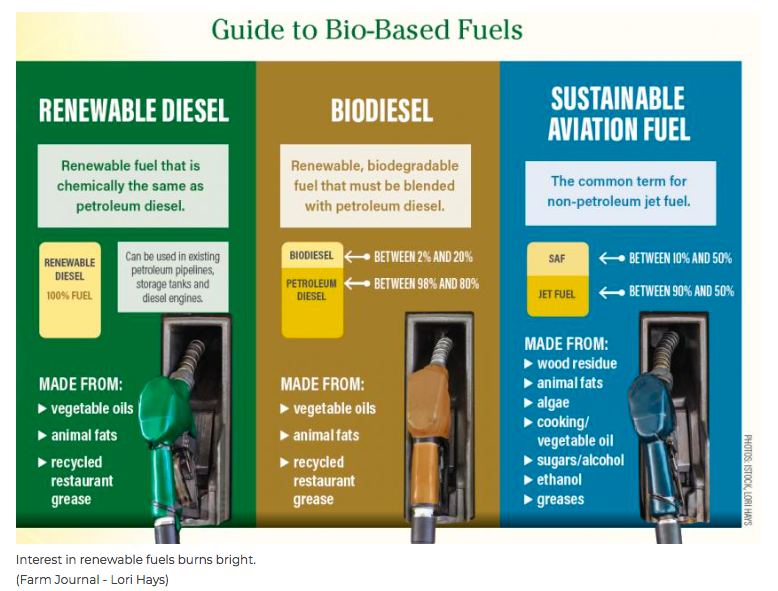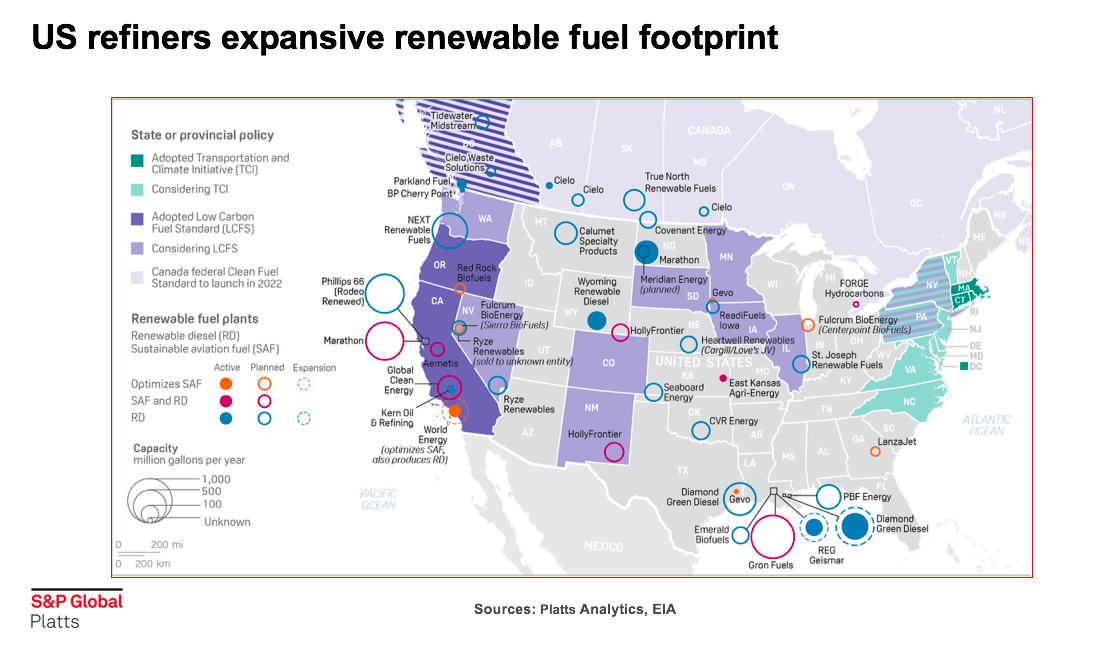United Just Completed First Flight Fueled by SAF, Here's Why Soybean Growers Should Take Note
U.S. Farm Report 12/11/21 - Farm Journal Report
As airlines work to reduce their carbon footprint, renewable diesel and sustainable aviation fuel are taking flight. Earlier this month, United Airlines successfully completed the first flight running on sustainable aviation fuel (SAF), a 100% renewable fuel made from products such as cooking oil, vegetable oil and even soybean oil.
“This an important and historic moment for global aviation,” said Scott Kirby, CEO of United Airlines, during the flight. “There's simply no battery technology, even theoretical technology, that has enough energy density that you could put enough batteries on the airplane to get an airplane this big with this many people flying this far," he said. "And so what works in a lot of other transportation industries won't work for aviation."
The sustainable aviation fuel used by United was made from sugar and corn instead of soybean oil, and analysts say the jet fuel industry could mean big business for farmers in the years ahead.
“By fueling one engine exclusively with sustainable aviation fuel, United Airlines took a huge step in proving that SAF is safe for commercial aviation,” says Pete Meyer, Head of Grain and Oilseed Analytics for S&P Global Platts. “The successful flight should offer encouragement that the current '50% rule' may be waived over time, opening up new investments in sustainable aviation production and thus more demand from U.S. agricultural products.”

As the soybean and corn industries work to cash in on a new opportunity around low carbon fuel standards, it’s one fueled by a movement to reduce the airline industry’s reliance on fossil fuels.
“We talk about demand drivers in agriculture, there's two of them right now, which is China and corn. And then this big story in renewable. I think both of those will keep agricultural prices high for the next two to three years,” says Dan Basse of AgResource Company.
SAF in Build Back Better
The race to reduce airplane emissions comes with a lofty goal -- the Biden administration says work to eliminate the airline industry’s fossil fuel usage by 2050. The Build Back Better (BBB) plan passed by the House last month includes nearly $1 billion for biofuels infrastructure, extends the biodiesel tax credit, and includes incentives for sustainable aviation fuel.
As the push towards sustainable aviation fuel gains traction, Renewable Fuels Groups are asking Congress for clarification on the SAF credit within the latest Build Back Better plan. The groups, which include Growth Energy, the National Biodiesel board, as well as a group that represents travel plazas and truck stops, sent a letter to Congress last week.
“To prevent stranding investments in existing and emerging environmentally beneficial biofuels facilities in rural America, and to ensure that any new SAF incentives are consistent with other tax incentives in driving economic, employment and environmental benefits, we respectfully request that lawmakers amend the definitions of SAF in both the Sustainable Aviation Fuel and the Clean Fuel Production Credit to clarify that eligible SAF does not include fuels derived by co-processing biomass with a feedstock that is not biomass,” the letter states.
SAF Could be Soybeans' Ticket to Higher Demand
Analysts believe SAF could be soybeans’ ticket for higher demand, even domesticating the U.S. soybean demand market.
“With renewable diesel and sustainable aviation fuel, it's a totally different animal, because you're going to have to power your heavy machinery, you're going to have to power your interstate truckers, and you're certainly going to have to power your airlines,” says Meyer. “So in our opinion, this has more sustainability than the ethanol business.”
Meyer says the energy transition away from fossil fuels will require a ramp up in renewable fuel production. Currently, S&P Global Platts says half a dozen plants are currently online, with more than 20 still in the development stage.
“The fact of the matter is that in our opinion by the year 2025, we will need 40 billion pounds of feedstock to keep the renewable energy refineries running,” he says.
Currently, the U.S. is only producing 12 to 14 billion pounds of the necessary products a year, which already include cooking oil, a far cry from the 40 billion needed. And Meyer thinks the gap can be filled with the help of soybean oil.
“We believe it can be filled domestically. But the problem there is we need more crushed plants. Because in the U.S. at the moment, crush plants are almost running at their capacity,” Meyer adds. “If our math is right, we're going to need 25 billion pounds. And that's all the soy we produce on a yearly basis."

The Need to Buy Acres
According to AgResource Company’s data, Basse says the U.S. will need to double its U.S.soybean oil supplies in order to meet the boon in demand.
“We're going from 25 billion pounds up close to 50 billion by 2024. That's going to take an increase of the U.S. crush industry, somewhere to the vicinity of 60% to get there. That's why you see all these oil companies combining with local crushers or let's say U.S. crushers here today,” says Basse.
Meyer thinks the new soybean demand won’t be the demand boon for soybean growers until 2023, as Basse estimates the U.S. will need 30 million more soybean acres by 2024 to fuel the new business.

“So we will see it both in basis but more importantly, we will see it in crops. We need more soybean acreage each year, somewhere in the vicinity of 3 to 7 million acres depending upon the year. And when these refineries are coming online, the market will have that demand pull. So, as you'll start thinking about soybean-corn relationships, soybean, wheat, or soybean, sorghum, these are really important as we think about going forward to 2024,” says Basse.
From policy changes to a social movement across the world, the changes could fuel soybean acreage and demand as soybeans’ ethanol moment could just be on the horizon.
Read, watch and listen to more insights about renewable diesel.







